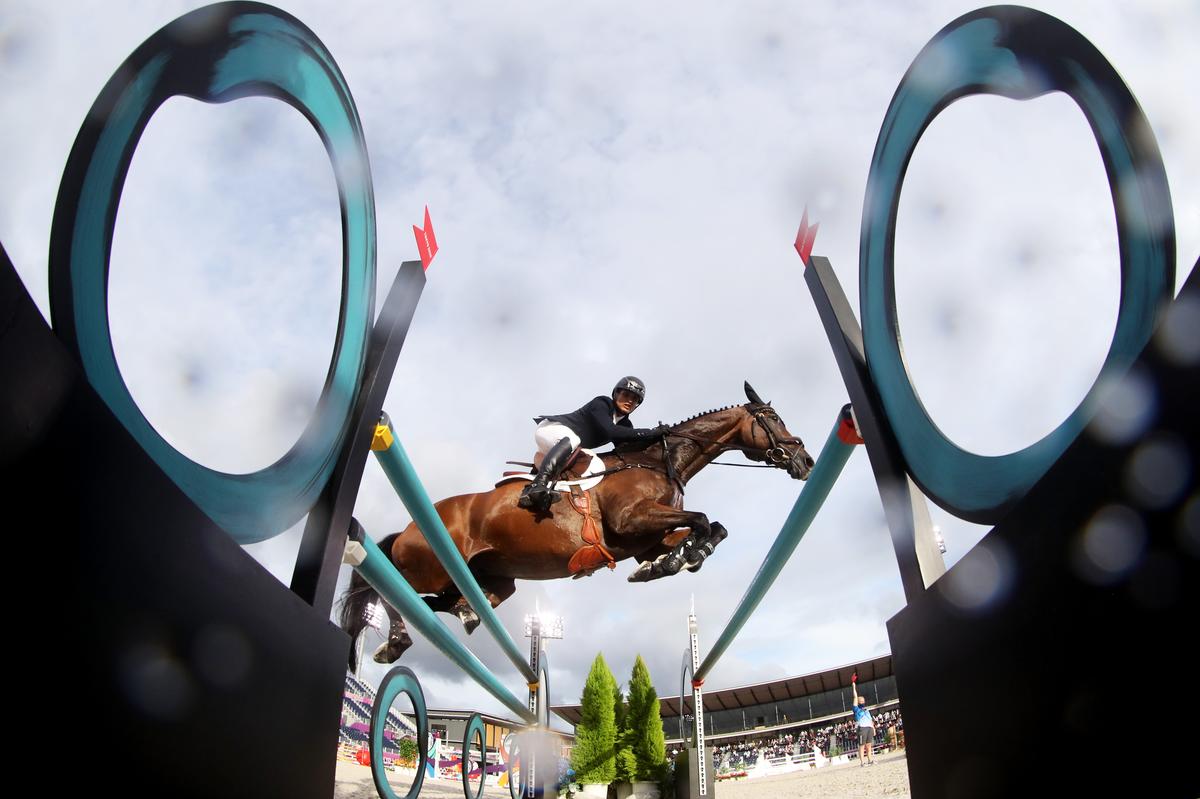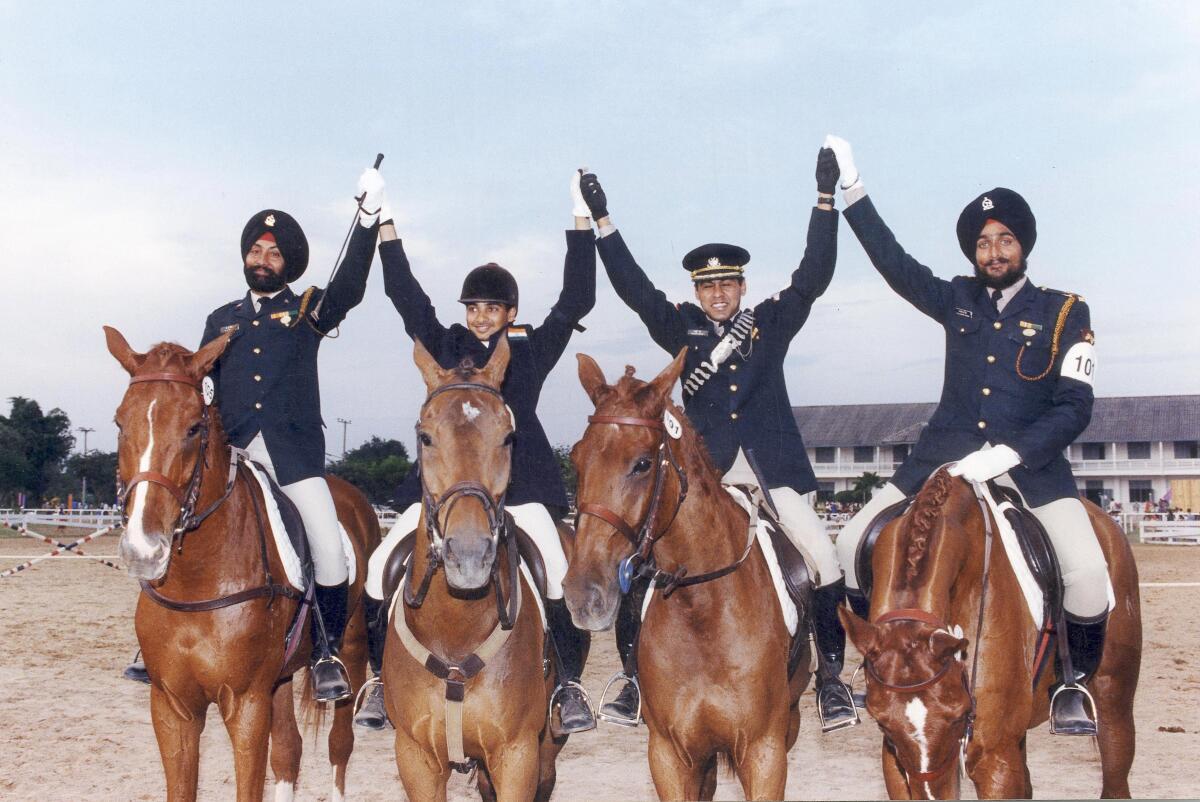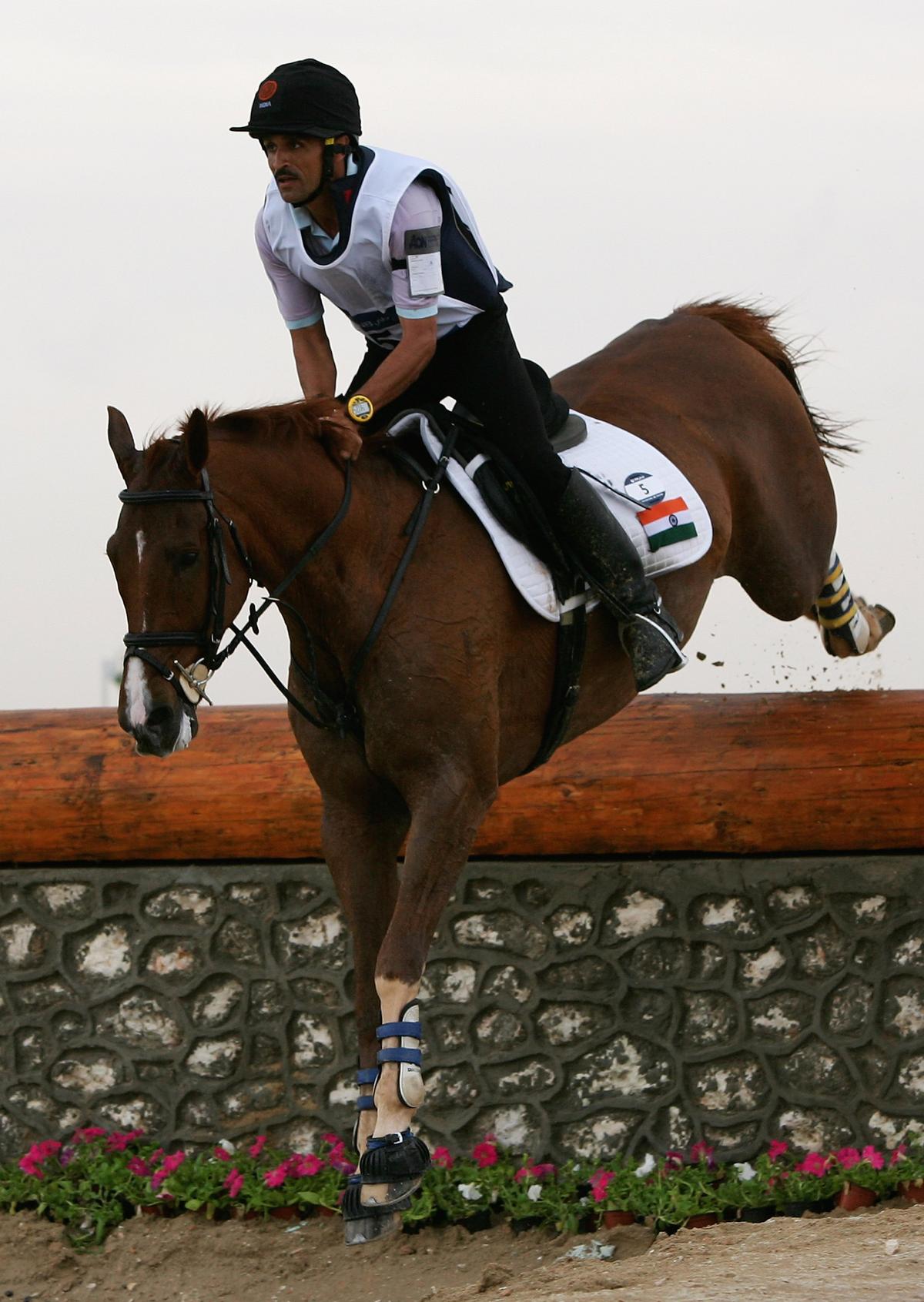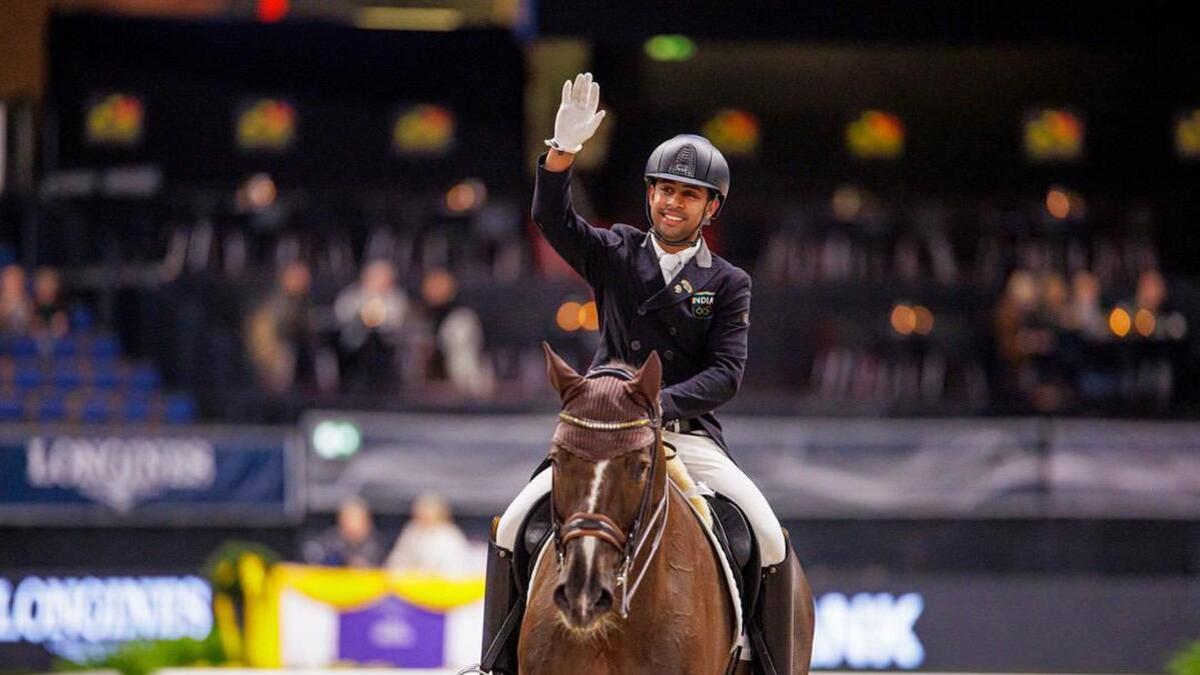The Army, a federation, and a throng of schools: How Equestrian is trying to gallop in India
“I think people don’t realise what our sport is really about. It’s just huge that he’s [Anush Agarwalla] qualified. I mean, it’s not an easy thing to qualify, that too in dressage. I have to give full kudos to him, his team and the support team,” Imtiaz Anees, an Olympian equestrian rider, told Sportstar.
On July 31, Anush Agarwalla will become the first Indian to participate in the dressage event at an Olympic Games, astride Sir Caramello.
Agarwalla became the first Indian to medal in dressage at the Asian Games after he clinched bronze atop Etro in Hangzhou last year. The Kolkata-born rider also was part of the dressage team that included Hriday Chheda, Divrakriti Singh, and Sudipti Hajela which won a historic gold in China.
ALSO READ | Obstacle racing the way forward for modern pentathlon, says world champion
While all these athletes now have their training bases in European countries like France and Germany, many of them learned the basics in various equestrian schools and academies in India.
Hajela has been associated with the Madhya Pradesh State Equestrian Academy in the past. Another rider, Raju Singh Bhadoria, who qualified for the Asiad, is sponsored by the MP academy. Ashish Limaye, who took part in the individual and team events in eventing at the Asiad, was supported by the Bangalore-based Embassy Riding School.

Fouaad Mirza of Team India riding Seigneur competes during the Eventing Jumping Team Final and Individual Qualifier on day ten of the Tokyo 2020 Olympic Gamesat Equestrian Park on August 02, 2021 in Tokyo, Japan.
| Photo Credit:
Getty Images
Fouaad Mirza of Team India riding Seigneur competes during the Eventing Jumping Team Final and Individual Qualifier on day ten of the Tokyo 2020 Olympic Gamesat Equestrian Park on August 02, 2021 in Tokyo, Japan.
| Photo Credit:
Getty Images
A place for founding the basics
Silva Storai, a former jockey, had come to India as a tourist in the late 70s. What made her stay was the chance to spearhead the Embassy Riding School in Bangalore, which she has been doing for almost three decades now.
Speaking to Sportstar, the Italian highlighted how schools like Embassy and others are the first stops for young children who aspire to enter the equestrian world.
“The idea is to inspire these kids to be professional, not to be sloppy. We advise them that when they want to get to the next level, it’s good for them to go abroad because you see the real world,” said Storai, who feels Indians have the best body structure for the sport.
ALSO READ | Saudi Arabia spending big on show jumping ahead of Paris Olympics
Captain Bhagirath (Retd) founded Sagar Equestrian Academy in Jaipur in 2015 shortly after retiring from the Indian Army. He categorises the players coming out of equestrian schools in two groups.
“The junior athletes, who are at the U-21 level, are groomed and taught the basics of the sport. They go on to compete at the junior Nationals and National level. The ones who have the capacity to compete at the international level tend to go abroad. The others often vie for government jobs in India through the sports quota,” the two-time Asiad bronze medallist told Sportstar over the phone.
Quality of Indian horses: Yay or neigh?
Be it shooting or archery, where the athletes have to depend on non-living things like their pistol or their bows, it is only in equestrian that the athlete has to depend on another living being: the horse.
“It’s all about having the best coach that you can get and a horse that you can build a meaningful partnership with. The horse must be talented because it does 90 per cent of the job,” Storai said, with a slight chuckle.
A major chunk of the expense borne by the athlete goes into the purchase and maintenance of the horse. Warmbloods are usually considered to be the ideal breed to excel in the sport, while thoroughbreds are the ones that are more widely found in India. When it comes to the price, Warmbloods burn a larger hole in the pocket.
According to Anees, who represented India in individual eventing at the 2000 Sydney Olympics, the lack of training is the dealbreaker for horses in India. “Everybody’s now going to Warmbloods because they’re buying ready-made horses. When we get a horse off the track, it takes me two years to make it into a good competition mount,” he told Sportstar.
Anees, an Asian Games bronze medallist, established the Seahorse Equestrian Training Facility on the seashores of Nargol, Gujarat. Through his facility, he stresses on the importance of maintaining the horses. “At Seahorse, we take pride in the care and professional management of the horses, designing a specific work plan for each one,” the centre’s website says.

Amolakjit Singh, Imtiaz Anees, Rajesh Pattu and Palwinder Singh of India, who won the Team Dressage event bronze medal, celebrate at the Asian Games 1998 in Bangkok, Thailand on December 10, 1998.
| Photo Credit:
V. Sudershan
Amolakjit Singh, Imtiaz Anees, Rajesh Pattu and Palwinder Singh of India, who won the Team Dressage event bronze medal, celebrate at the Asian Games 1998 in Bangkok, Thailand on December 10, 1998.
| Photo Credit:
V. Sudershan
Equestrian, for everyone
Overseas training camps and experienced coach also add to the expenses, making equestrian a tough proposition for athletes from humble backgrounds.
Bhadoria, son of a farmer, is supported by the MP state academy alongside 35 other riders. “All these athletes, like Raju, are sponsored by the government. This gives children from middle class families the opportunity to reach the international level,” Bhagirath said.
At Seahorse, Anees has what is called a ‘working student program’. The Mumbai lad experienced this system firsthand when he went abroad to train with two-time Olympic gold medallist Bruce Davidson.
“Students who cannot afford the training or the coaching, they can come and live with me. I don’t charge them, and they come as a working student. They learn to work the stable. They don’t have to clean stables but learn the management side. When we have other students, they help in getting their horses ready, getting their horses fit. Sometimes they do the low-level lessons for me,” the 54-year-old explained. “I don’t want to stop anybody from coming and training at my place because of finances.”
EFI: An ally or an aberration?
Italy, one of the many powerhouses of equestrianism in the world, had a structure similar to that in India running the sport. The army and police were heavily involved in equestrian events in the European country.
Storai explains how the ‘Carabinieri’, a section of the Italian police force, which is mostly a mounted regiment, had significant influence in equestrianism. This gradually changed about 40 years back, according to the Embassy director, when a business model was adopted to run the sport.
“An army or a police-run federation has its own limitation because primarily, you concentrate on defending the country,” Storai said. “Right now, the federation is going through many challenges, and I think once we come out of them, we should be able to develop equestrian much faster.”
Storai calls for more accountability, something that is seen in European countries. Moreover, she hopes for synergy between the army, the civil groups, and the people.
Colonel Jaiveer Singh, the present Secretary General of the Equestrian Federation of India (EFI), feels that the governing body is doing everything to promote the sport.
“We are working as a team for the growth of the sport,” Singh told Sportstar. When asked about when fresh elections would be conducted, since the allotted four-year term was over for the existing committee, he couldn’t comment on the same as it is “subjudice”.
While Storai asks for the EFI to function under the National Sports Code, Singh says that the body is doing just that. “The government can amend or change rules. In the 2011 NSC, there is a relaxation exemption, and we are in complete compliance with it. We are a big fan of the Code,” he said, citing clause 16 on page 32 of the document.

Bhagirath Singh of India rides Guddu in action at the Equestrian Cross Country Event at Sport City during the 15th Asian Games Doha 2006 on December 7, 2006 in Doha, Qatar.
| Photo Credit:
Getty Images
Bhagirath Singh of India rides Guddu in action at the Equestrian Cross Country Event at Sport City during the 15th Asian Games Doha 2006 on December 7, 2006 in Doha, Qatar.
| Photo Credit:
Getty Images
Speaking about the influence of the army in India’s equestrian, he said: “ Jo javelin jeeta, woh bhi army ka hai (the one who won in javelin is also from the army). Army plays a lot of sports. In this sport, it is just one of the players.”
Bhagirath, a retired army man, underlines the role the army has played in keeping the sport alive. “Private entities cannot maintain such grounds. Even civil groups won’t be able to have such resources. We cannot forget the contributions of the army in this sport because of a few select people and their ulterior motives that have created problems,” the 51-year-old said.



